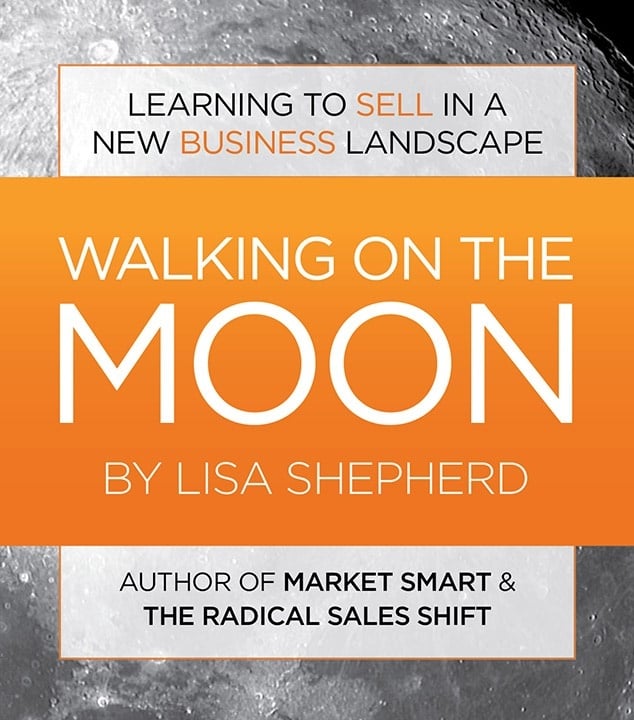LESSON #5: B2B MARKETING IS MULTI-FACETED AND MULTI-TOUCH

Before the digital age, a message needed to be heard between five and seven times to be remembered. With the average American today being exposed to between 5,000 and 30,000 brand messages daily,1 there’s a lot of ‘noise’ in the marketplace, and it’s difficult for any single message to get through. Most B2B marketers now believe they need to connect with a prospect between 11 and 13 times to make an impact. In some cases, particularly in complex B2B sectors, the number is even higher.
CONNECTING THROUGH TOUCHPOINTS
Touchpoints are the many points where customers interact with a company and its brands before, during and after a purchase. A touchpoint can be in digital or physical format. It can be anything from a website visit to a trade show meeting to an article in an industry publication. The most successful companies focus on building maximum customer satisfaction at each touchpoint along the buying journey. Why? Touchpoints accelerate the sales process and move prospects through the funnel. It generally falls to marketing to achieve more and better touches for B2B companies.
CHOOSING YOUR TOUCHPOINTS WISELY
Every company has its own number of appropriate touches based on industry and target market. Knowing the number of touchpoints needed to get through to buyers is important for B2B revenue generation. It helps both marketers and salespeople plan their programs and set realistic expectations for the timing of results. The more you know about your buyers, the more accurately you can decide which touchpoints to focus on.
B2B companies need to cover a lot of channels to keep up with buyers. Buyers consume many types of media both on the job and at home, so you must be prepared to reach them both on and off the clock. In any single day, a buyer can easily spend time on Facebook, YouTube, LinkedIn, conduct countless Google searches, attend an industry conference, read product reviews, and more. In fact, all that can happen before lunch. And buyers are not just accessing multiple forms of information, they’re doing it on multiple devices. In fact, people switch between screens and devices up to 21 times per hour!2 With the limited resources B2B companies typically have, it’s tough to deliver multiple messages through multiple channels. This is where it’s critical to have a clear target market and a solid understanding of the most important stakeholders in the purchase decision.
KNOWING YOUR BUYERS INTIMATELY
The vast majority of B2B purchases involve a growing number of stakeholders at different levels of seniority and with different functional responsibilities. B2B companies with limited resources, therefore, need to focus in on the right buyers in the process and know which channels will get their message through to those buyers. You can’t, realistically, appear everywhere. You need to select just a few different channels to get your message in front of a buyer multiple times, and you also need to be realistic about your resources. If you spread your message across too many channels, you won’t have sufficient resources to be effective in any of them. Companies that are new to marketing shouldn’t take on more than three to five communications tactics. As they gain experience and put processes in place to manage the different tactics and channels, they can take on more.
GETTING PERSONAL WITH YOUR MARKETING
Adding personalization, wherever possible, is key. B2B buyers are experiencing personalization at touchpoints in their daily lives, from Amazon recommendations to targeted Facebook ads. It’s not too much to expect the same level of relevance and message targeting in their business lives. When a buyer opens an email, they expect personalized content, campaigns and recommendations. And the most efficient way to do this is through technology. Forrester says that digital transformation is critical to “deliver individualized experiences at scale and operate at the speed of the market.”3 Personalized content can provide buyers with valuable assistance in the decision-making process, meaning that it helps to close the sale!
Building buyer personas and focusing on message segmentation are the first steps to personalization. And you might consider automating your segmentation and delivery. To automate personalized email, ad campaigns and more, many data sources need to be brought together. Data from your CRM (Customer Relationship Management) platform must be synced with an MA (Marketing Automation) platform in order to deliver a personalized marketing experience. By automating your marketing, you can learn whether buyers are finding you through organic search, paid search, email, direct traffic or social media. MA will also give you visibility into the content that interests each buyer. Today, 63% of companies that are outgrowing their competitors use marketing automation.4 Don’t be left behind!
If you want to follow a fictional B2B company’s journey to understanding how to break through to buyers in today’s business landscape, read my latest book, Walking On The Moon, here. And, if you want to discuss a marketing automation solution that can add personalization to your touchpoints, we can help. Marketing automation isn’t for everyone, but when it is, we’re expert implementers. Let’s talk.
Sources:
1. http://linkd.in/1pFfzWN
2. https://www.ama.org/partners/content/Pages/why-customers-attention-scarcest-resources-2017.aspx
3. https://go.forrester.com/2018-predictions/
4. https://www.emailmonday.com/marketing-automation-statistics-overview/
.png?width=2361&height=488&name=Mezzanine%20Logo_Horiz_RGB_on%20blue%20(1).png)

![[7057] MGK_MoonBook_Blog launch 2_v1-3](https://info.mezzaninegrowth.com/hs-fs/hubfs/social-suggested-images/%5B7057%5D%20MGK_MoonBook_Blog%20launch%202_v1-3.jpg?width=300&name=%5B7057%5D%20MGK_MoonBook_Blog%20launch%202_v1-3.jpg)